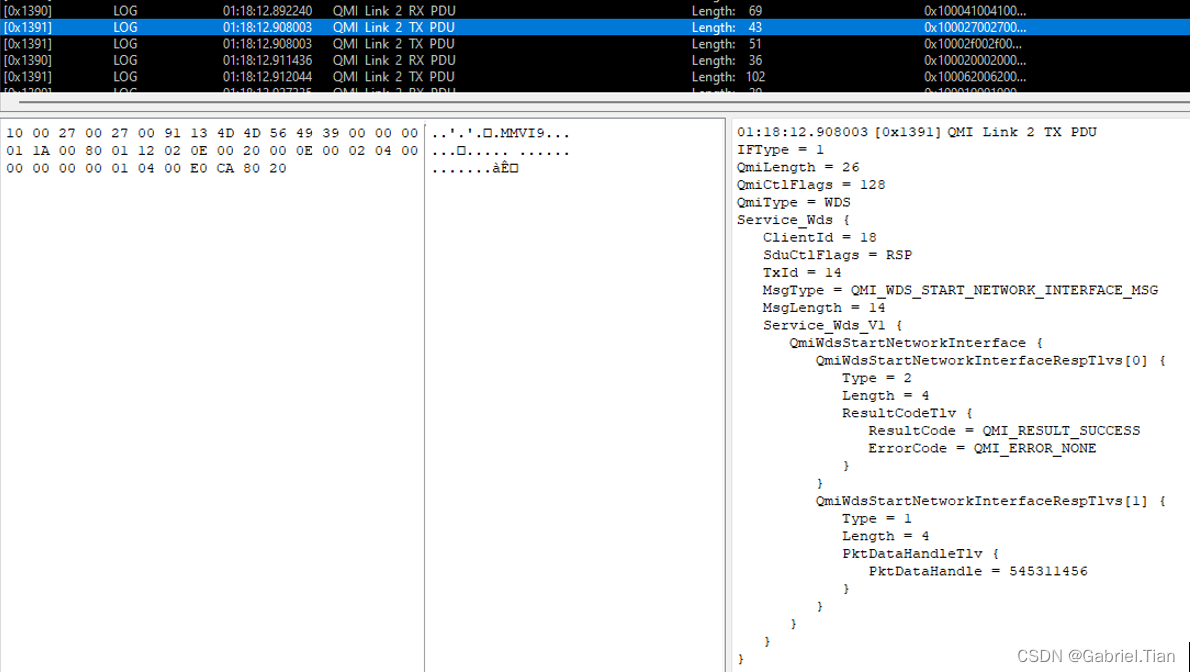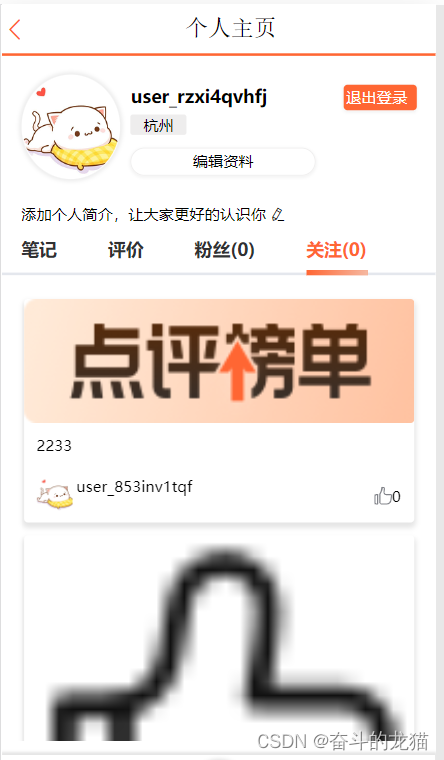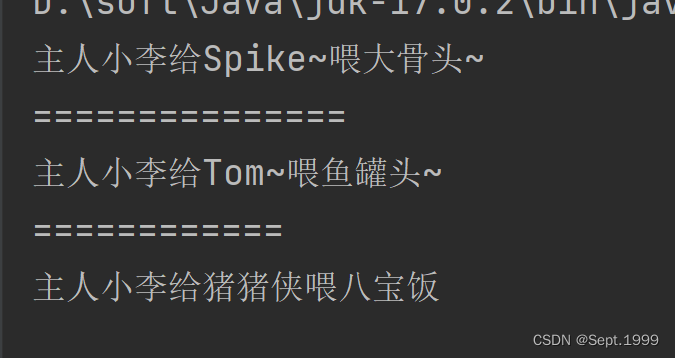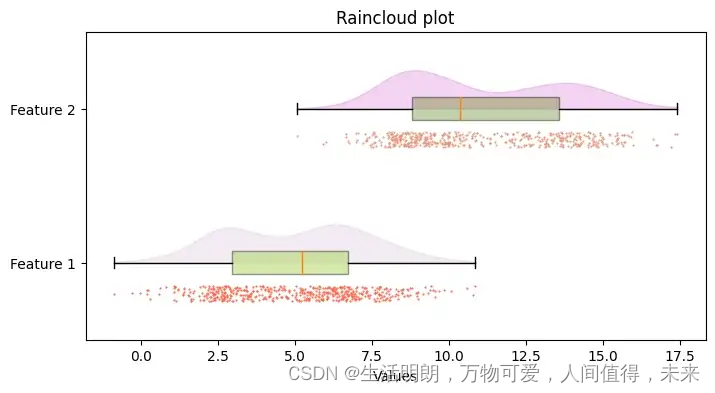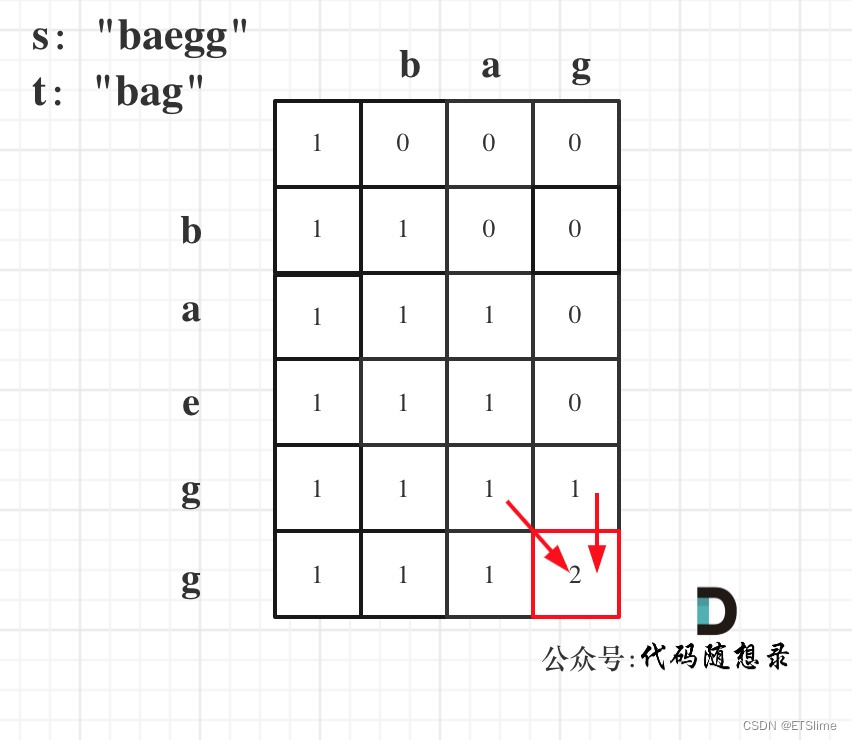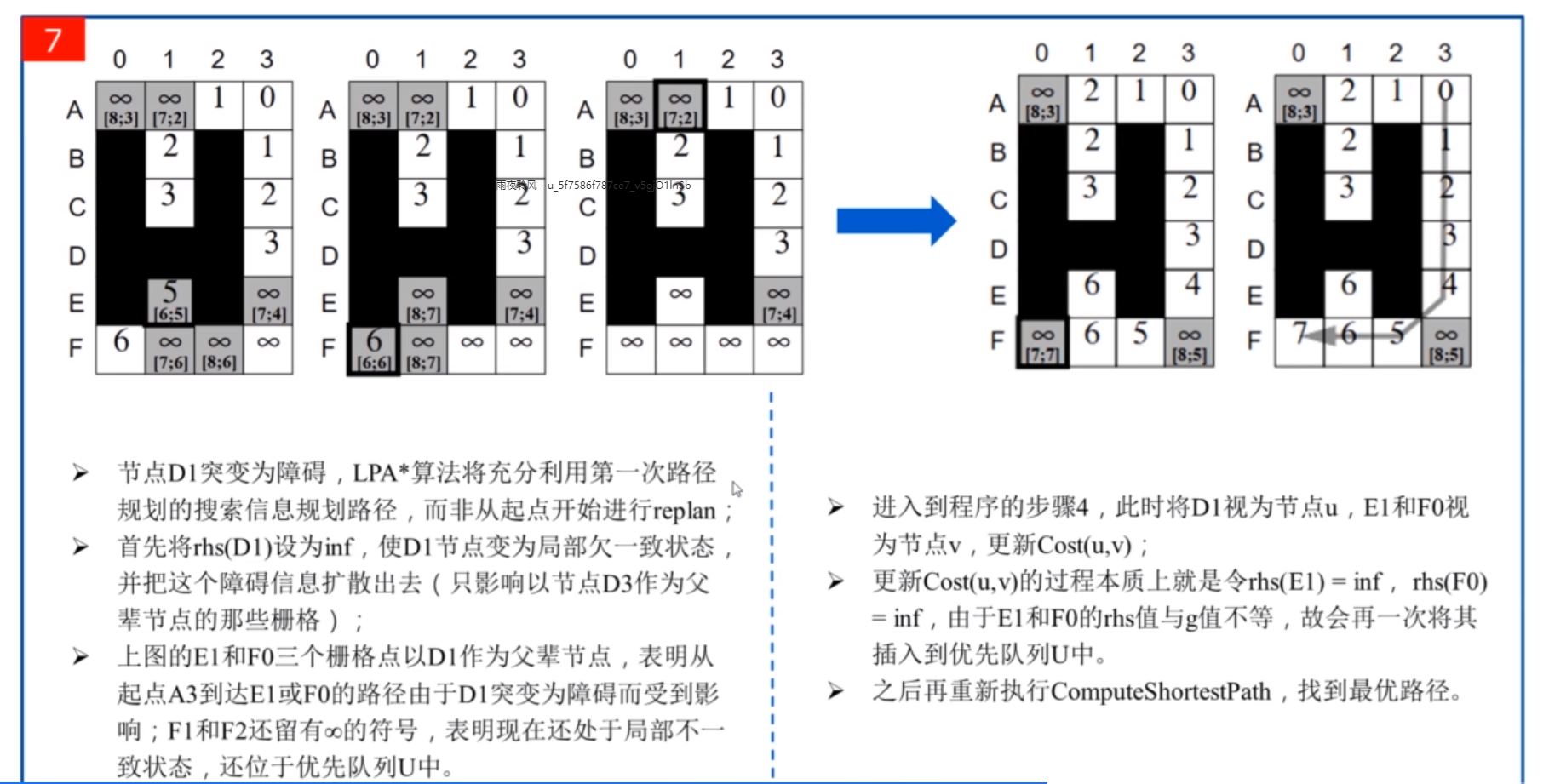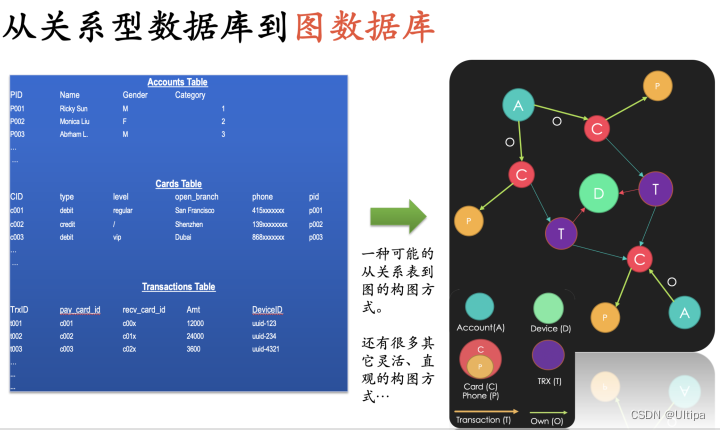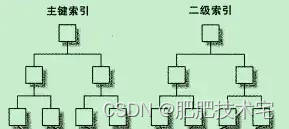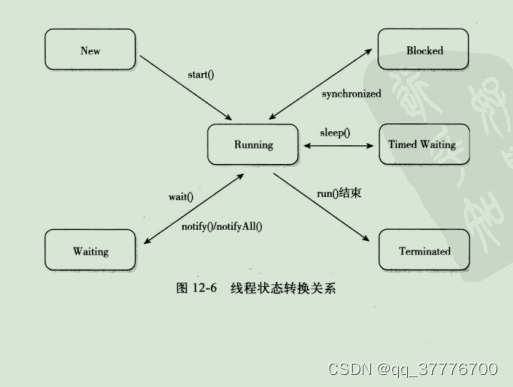栈和队列
155. 最小栈
设计一个支持 push ,pop ,top 操作,并能在常数时间内检索到最小元素的栈。
实现 MinStack 类:
MinStack()初始化堆栈对象。void push(int val)将元素val推入堆栈。void pop()删除堆栈顶部的元素。int top()获取堆栈顶部的元素。int getMin()获取堆栈中的最小元素。
输入:
["MinStack","push","push","push","getMin","pop","top","getMin"]
[[],[-2],[0],[-3],[],[],[],[]]
输出:
[null,null,null,null,-3,null,0,-2]
解释:
MinStack minStack = new MinStack();
minStack.push(-2);
minStack.push(0);
minStack.push(-3);
minStack.getMin(); --> 返回 -3.
minStack.pop();
minStack.top(); --> 返回 0.
minStack.getMin(); --> 返回 -2.
使用两个栈,一个正常的按照栈的逻辑进行压入和弹出操作,另一个存储最小值。
- 存储最小值的栈配合另一个栈,在压入时候,若压入的值小于等于最小值栈的栈顶元素,则也将该值压入到最小值栈,来保持最小值栈的栈顶一直是当前可以获得的最小值;
- 在弹出的时候,判断最小值栈和另一栈是否具有相同的栈顶值,若相同,则最小值栈顶元素也弹出,保证最小值栈的栈顶元素一直是另一个栈中的最小值;
- 返回栈顶元素,则直接返回正常的栈的顶端元素;返回最小值元素,则直接返回最小值栈的栈顶元素。
class MinStack {
public:
MinStack() {}
stack<int> st;
stack<int> minSt;
void push(int val) {
st.push(val);
if(minSt.empty() || val <= minSt.top()){
minSt.push(val);
}
}
void pop() {
if(st.top() == minSt.top()){
minSt.pop();
}
st.pop();
}
int top() {
return st.top();
}
int getMin() {
return minSt.top();
}
};
225. 用队列实现栈
请你仅使用两个队列实现一个后入先出(LIFO)的栈,并支持普通栈的全部四种操作(push、top、pop 和 empty)。
实现 MyStack 类:
void push(int x)将元素 x 压入栈顶。int pop()移除并返回栈顶元素。int top()返回栈顶元素。boolean empty()如果栈是空的,返回true;否则,返回false。
注意:
- 你只能使用队列的基本操作 —— 也就是
push to back、peek/pop from front、size和is empty这些操作。 - 你所使用的语言也许不支持队列, 你可以使用 list (列表)或者 deque(双端队列)来模拟一个队列 , 只要是标准的队列操作即可。
输入:
["MyStack", "push", "push", "top", "pop", "empty"]
[[], [1], [2], [], [], []]
输出:
[null, null, null, 2, 2, false]
解释:
MyStack myStack = new MyStack();
myStack.push(1);
myStack.push(2);
myStack.top(); // 返回 2
myStack.pop(); // 返回 2
myStack.empty(); // 返回 False
一个队列在模拟栈弹出元素的时候只要将队列头部的元素(除了最后一个元素外) 重新添加到队列尾部,此时在去弹出元素就是栈的顺序了。
class MyStack {
public:
queue<int> que;
MyStack() {}
void push(int x) {
que.push(x);
}
int pop() {
int n = que.size() - 1;
for(int i = 0; i < n; i++){
que.push(que.front());
que.pop();
}
int res = que.front();
que.pop();
return res;
}
int top() {
return que.back();
}
bool empty() {
return que.empty();
}
};
232. 用栈实现队列
请你仅使用两个栈实现先入先出队列。队列应当支持一般队列支持的所有操作(push、pop、peek、empty):
实现 MyQueue 类:
void push(int x)将元素 x 推到队列的末尾int pop()从队列的开头移除并返回元素int peek()返回队列开头的元素boolean empty()如果队列为空,返回true;否则,返回false
说明:
- 你 只能 使用标准的栈操作 —— 也就是只有
push to top,peek/pop from top,size, 和is empty操作是合法的。 - 你所使用的语言也许不支持栈。你可以使用 list 或者 deque(双端队列)来模拟一个栈,只要是标准的栈操作即可。
输入:
["MyQueue", "push", "push", "peek", "pop", "empty"]
[[], [1], [2], [], [], []]
输出:
[null, null, null, 1, 1, false]
解释:
MyQueue myQueue = new MyQueue();
myQueue.push(1); // queue is: [1]
myQueue.push(2); // queue is: [1, 2] (leftmost is front of the queue)
myQueue.peek(); // return 1
myQueue.pop(); // return 1, queue is [2]
myQueue.empty(); // return false
使用两个栈 s1, s2 就能实现一个队列的功能。当调用 push 让元素入队时,只要把元素压入 s1 即可:

使用 peek 或 pop 操作队头的元素时,若 s2 为空,可以把 s1 的所有元素取出再添加进 s2,这时候 s2 中元素就是先进先出顺序了:

class MyQueue {
public:
stack<int> st1;
stack<int> st2;
MyQueue() {
}
void push(int x) {
st1.push(x);
}
int pop() {
peek(); // 先调用 peek 保证 st2 非空
int res = st2.top();
st2.pop();
return res;
}
int peek() {
if(st2.empty()){
// 把 s1 元素压入 s2
while(!st1.empty()){
st2.push(st1.top());
st1.pop();
}
}
return st2.top();
}
bool empty() {
return st1.empty() && st2.empty();
}
};
946. 验证栈序列
给定 pushed 和 popped 两个序列,每个序列中的 值都不重复,只有当它们可能是在最初空栈上进行的推入 push 和弹出 pop 操作序列的结果时,返回 true;否则,返回 false 。
输入:pushed = [1,2,3,4,5], popped = [4,5,3,2,1]
输出:true
解释:我们可以按以下顺序执行:
push(1), push(2), push(3), push(4), pop() -> 4,
push(5), pop() -> 5, pop() -> 3, pop() -> 2, pop() -> 1
模仿压栈和出栈的动作。
class Solution {
public:
bool validateStackSequences(vector<int>& pushed, vector<int>& popped) {
if(pushed.size() != popped.size()){
return false;
}
stack<int> st;
int j = 0; // 注意是
for(int i = 0; i < pushed.size(); i++){
// 入栈
st.push(pushed[i]);
// 能出栈,则尽量出栈
while(j < popped.size() && !st.empty() && st.top() == popped[j]){
st.pop();
j++;
}
}
//若栈为空,则说明满足要求
return st.empty();
}
};
20. 有效的括号
给定一个只包括 '(',')','{','}','[',']' 的字符串 s ,判断字符串是否有效。
有效字符串需满足:
- 左括号必须用相同类型的右括号闭合。
- 左括号必须以正确的顺序闭合。
输入:s = "()[]{}"
输出:true
输入:s = "(]"
输出:false
括号匹配是使用栈解决的经典问题,有以下三种情况:
- 字符串里左方向的括号多余了 ,所以不匹配。

- 括号没有多余,但是括号的类型没有匹配上。

- 字符串里右方向的括号多余了,所以不匹配。

-
第一种情况:已经遍历完了字符串,但是栈不为空,说明有相应的左括号没有右括号来匹配,所以return false;
-
第二种情况:遍历字符串匹配的过程中,发现栈里没有要匹配的字符,所以return false;
-
第三种情况:遍历字符串匹配的过程中,栈已经为空了,没有匹配的字符了,说明右括号没有找到对应的左括号return false;
那么什么时候说明左括号和右括号全都匹配了呢,就是字符串遍历完之后,栈是空的,就说明全都匹配了。
class Solution {
public:
bool isValid(string s) {
stack<char> st;
for(char ch : s){
if(ch == '('){
st.push(')');
}else if(ch == '{'){
st.push('}');
}else if(ch == '['){
st.push(']');
}else if(st.empty() || ch != st.top()){
// 第二、三种情况
return false;
}else if(ch == st.top()){
// st.top() 与 s[i]相等,栈弹出元素
st.pop();
}
}
// 第一种情况
return st.empty();
}
};
921. 使括号有效的最少添加
只有满足下面几点之一,括号字符串才是有效的:
- 它是一个空字符串,或者
- 它可以被写成
AB(A与B连接), 其中A和B都是有效字符串,或者 - 它可以被写作
(A),其中A是有效字符串。
给定一个括号字符串 s ,移动N次,你就可以在字符串的任何位置插入一个括号。
- 例如,如果
s = "()))",你可以插入一个开始括号为"(()))"或结束括号为"())))"。
返回为使结果字符串 s 有效而必须添加的最少括号数。
输入:s = "())"
输出:1
输入:s = "((("
输出:3
转换思路,改为求删除最少的字符数量,使得原字符串有效。
class Solution{
public:
int minAddToMakeValid(string s){
int left = 0; //统计当前的左括号的数量
int res = 0; //统计需要删除的数量
for (char &ch : s){
if (ch == '('){ //增加左括号
left++;
}else{
if (left == 0){ //不能配对,需要删除
res++;
}else{ //和右括号配对成功,减去一个左括号
left--;
}
}
}
return res + left; //返回需要删除的数量
}
};
或者:
class Solution{
public:
int minAddToMakeValid(string s){
// res 记录插入次数
int res = 0;
// need 变量记录右括号的需求量
int need = 0;
for(char& ch : s){
if(ch == '('){
need++;
}else{
need--;
if(need == -1){
need = 0;
// 需插入一个左括号
res++;
}
}
}
return res + need;
}
};
1541. 平衡括号字符串的最少插入次数
给你一个括号字符串 s ,它只包含字符 '(' 和 ')' 。一个括号字符串被称为平衡的当它满足:
- 任何左括号
'('必须对应两个连续的右括号'))'。 - 左括号
'('必须在对应的连续两个右括号'))'之前。
比方说 "())", "())(())))" 和 "(())())))" 都是平衡的, ")()", "()))" 和 "(()))" 都是不平衡的。你可以在任意位置插入字符 ‘(’ 和 ‘)’ 使字符串平衡,请你返回让 s 平衡的最少插入次数。
输入:s = "(()))"
输出:1
和上题类似:
class Solution {
public:
int minInsertions(string s) {
// res 记录插入次数
// need 记录需右括号的需求量
int res = 0, need = 0;
for (int i = 0; i < s.size(); i++) {
if (s[i] == '(') {
need += 2;
if (need % 2 == 1) {
// 插入一个右括号
res++;
// 对右括号的需求减一
need--;
}
}else{
need--;
// 右括号太多
if (need == -1) {
// 插入一个左括号
res++;
// 对右括号的需求变为 1
need = 1;
}
}
}
return res + need;
}
};
1047. 删除字符串中的所有相邻重复项
给出由小写字母组成的字符串 S,重复项删除操作会选择两个相邻且相同的字母,并删除它们。在 S 上反复执行重复项删除操作,直到无法继续删除。在完成所有重复项删除操作后返回最终的字符串。答案保证唯一。
输入:"abbaca"
输出:"ca"
对当前字符来说,如果结果字符串是空的,则直接将当前字符压入到结果字符串中;如果结果字符串不为空,则和结果字符串的尾部字符比较,若相同,则将尾部字符弹出,若不相同,则将当前字符压入到结果字符中。
class Solution {
public:
string removeDuplicates(string s) {
string res;
for(char ch : s){
if(res.empty() || res.back() != ch){
res += ch;
}else{
res.pop_back();
}
}
return res;
}
};
150. 逆波兰表达式求值
根据 逆波兰表示法,求表达式的值。有效的算符包括 +、-、*、/ 。每个运算对象可以是整数,也可以是另一个逆波兰表达式。
注意:两个整数之间的除法只保留整数部分。可以保证给定的逆波兰表达式总是有效的。换句话说,表达式总会得出有效数值且不存在除数为 0 的情况。
输入:tokens = ["2","1","+","3","*"]
输出:9
解释:该算式转化为常见的中缀算术表达式为:((2 + 1) * 3) = 9
逆波兰表达式发明出来就是为了方便计算机运用「栈」进行表达式运算的,其运算规则是,按顺序遍历逆波兰表达式中的字符
-
如果是数字,则放入栈;
-
如果是运算符,则将栈顶的两个元素拿出来进行运算,再将结果放入栈。
对于减法和除法,运算顺序别搞反了,栈顶第二个数是被除(减)数。
class Solution {
public:
int evalRPN(vector<string>& tokens) {
stack<int> st;
for(string& token : tokens){
if(token == "+" || token == "-" || token == "*" || token == "/"){
int a = st.top();st.pop();
int b = st.top();st.pop();
if(token == "+") st.push(a + b);
if(token == "-") st.push(b - a);
if(token == "*") st.push(a * b);
if(token == "/") st.push(b / a);
}else{
st.push(stoi(token));
}
}
return st.top();
}
};
224. 基本计算器
给你一个字符串表达式 s ,请你实现一个基本计算器来计算并返回它的值。注意: 不允许使用任何将字符串作为数学表达式计算的内置函数,比如 eval() 。
输入:s = "1 + 1"
输出:2
输入:s = " 2-1 + 2 "
输出:3
输入:s = "(1+(4+5+2)-3)+(6+8)"
输出:23
class Solution {
public:
int calculate(string s) {
stack<int> st;
st.push(1);
// sign为1或者-1,表示数字的正负
int sign = 1, res = 0, i = 0;
int n = s.size();
while (i < n) {
if (s[i] == ' ') {
i++;
} else if (s[i] == '+') {//若为+则sign为1
sign = st.top();
i++;
} else if (s[i] == '-') {//若为-则sign为-1
sign = -st.top();
i++;
} else if (s[i] == '(') {//若为(则sign入栈
st.push(sign);
i++;
} else if (s[i] == ')') {//若为)则sign出栈
st.pop();
i++;
} else {//若为0-9则将字符串转为整形num,更新res
long num = 0;
while (i < n && s[i] >= '0' && s[i] <= '9') {
num = num * 10 + s[i] - '0';
i++;
}
res += sign * num;
}
}
return res;
}
};
227. 基本计算器 II
给你一个字符串表达式 s ,请你实现一个基本计算器来计算并返回它的值,整数除法仅保留整数部分。**注意:**不允许使用任何将字符串作为数学表达式计算的内置函数,比如 eval() 。
输入:s = "3+2*2"
输出:7
输入:s = " 3/2 "
输出:1
输入:s = " 3+5 / 2 "
输出:5
class Solution {
public:
int calculate(string s) {
stack<int> st;
char sign = '+';
int num = 0;
int n = s.size();
for (int i = 0; i < n; ++i) {
if (isdigit(s[i])) {
num = num * 10 + (s[i] - '0');
}
if (!isdigit(s[i]) && s[i] != ' ' || i == n - 1) {
if(sign == '+') st.push(num);
if(sign == '-') st.push(-num);
if(sign == '*') st.top() *= num;
if(sign == '/') st.top() /= num;
sign = s[i];
num = 0;
}
}
int res = 0;
while(!st.empty()){
res += st.top();
st.pop();
}
return res;
}
};
772. 基本计算器 III
实现一个基本的计算器来计算简单的表达式字符串。表达式字符串只包含非负整数,算符 +、-、*、/ ,左括号 ( 和右括号 ) ,整数除法需要向下截断 。
输入:s = "1+1"
输出:2
输入:s = "6-4/2"
输出:4
输入:s = "2*(5+5*2)/3+(6/2+8)"
输出:21
输入:s = "(2+6*3+5-(3*14/7+2)*5)+3"
输出:-12
class Solution {
public:
int calculate(string s) {
stack<int> st;
char sign = '+';
int num = 0;
int n = s.size();
for (int i = 0; i < n - 1; ++i) {
if (isdigit(s[i])) {
num = num * 10 + int(s[i] - '0');
}
if(s[i] == '('){
//s的子串,找),剔除()
int count = 0;
for(int j = i; j < n; j++){
if(s[j] == '(') count++;
if(s[j] == ')') {
count--;
if(count == 0) break;
}
}
num = calculate(s.substr(i + 1, j - i - 1));
i = j + 1;
}
if (!isdigit(s[i]) && s[i] != ' ' || i == n - 1) {
switch (sign) {
case '+':
st.push(num);
break;
case '-':
st.push(-num);
break;
case '*':
st.top() *= num;
break;
case '/':
st.top() /= num;
}
sign = s[i];
num = 0;
}
}
int res = 0;
while(!st.empty()){
res += st.top();
st.pop();
}
return res;
}
};
394. 字符串解码
给定一个经过编码的字符串,返回它解码后的字符串。
编码规则为: k[encoded_string],表示其中方括号内部的 encoded_string 正好重复 k 次。注意 k 保证为正整数。你可以认为输入字符串总是有效的;输入字符串中没有额外的空格,且输入的方括号总是符合格式要求的。此外,你可以认为原始数据不包含数字,所有的数字只表示重复的次数 k ,例如不会出现像 3a 或 2[4] 的输入。
输入:s = "3[a]2[bc]"
输出:"aaabcbc"
输入:s = "3[a2[c]]"
输出:"accaccacc"
使用栈来解压中括号中的内容:
- 一个栈用于存储字符串,一个栈用于存储数字;
- 根据遇到的中括号的左括号或右括号,执行不同的操作;
- 遇到左括号,就把当前解析出来的内容压入到对应的两个栈中;
- 遇到右括号,就把之前的字符串和数字拿出来进行解压,既去除当前左括号对应的字符串的压缩;
class Solution {
public:
string decodeString(string s) {
stack<int> nums;
stack<string> strs;
int num = 0;
string str;
for(char ch : s){
if(isdigit(ch)){
num = num * 10 + (ch - '0');
}else if(isalpha(ch)){
str += ch;
}else if(ch == '['){
nums.push(num);
num = 0;
strs.push(str);
str = "";
}else if(ch == ']'){
int n = nums.top();
nums.pop();
for(int i = 0; i < n; i++){
strs.top() += str;
}
str = strs.top();
strs.pop();
}
}
return str;
}
};
239. 滑动窗口最大值(难)
给你一个整数数组 nums,有一个大小为 k 的滑动窗口从数组的最左侧移动到数组的最右侧。你只可以看到在滑动窗口内的 k 个数字。滑动窗口每次只向右移动一位。返回滑动窗口中的最大值。
输入:nums = [1,3,-1,-3,5,3,6,7], k = 3
输出:[3,3,5,5,6,7]
解释:
滑动窗口的位置 最大值
--------------- -----
[1 3 -1] -3 5 3 6 7 3
1 [3 -1 -3] 5 3 6 7 3
1 3 [-1 -3 5] 3 6 7 5
1 3 -1 [-3 5 3] 6 7 5
1 3 -1 -3 [5 3 6] 7 6
1 3 -1 -3 5 [3 6 7] 7
单调栈
496. 下一个更大元素 I
nums1 中数字 x 的 下一个更大元素 是指 x 在 nums2 中对应位置 右侧 的 第一个 比 x 大的元素。给你两个 没有重复元素 的数组 nums1 和 nums2 ,下标从 0 开始计数,其中nums1 是 nums2 的子集。
对于每个 0 <= i < nums1.length ,找出满足 nums1[i] == nums2[j] 的下标 j ,并且在 nums2 确定 nums2[j] 的 下一个更大元素 。如果不存在下一个更大元素,那么本次查询的答案是 -1 。返回一个长度为 nums1.length 的数组 ans 作为答案,满足 ans[i] 是如上所述的 下一个更大元素 。
输入:nums1 = [4,1,2], nums2 = [1,3,4,2].
输出:[-1,3,-1]
解释:nums1 中每个值的下一个更大元素如下所述:
- 4 ,nums2 = [1,3,4,2]。不存在下一个更大元素,所以答案是 -1 。
- 1 ,nums2 = [1,3,4,2]。下一个更大元素是 3 。
- 2 ,nums2 = [1,3,4,2]。不存在下一个更大元素,所以答案是 -1 。
单调栈的模板:
输入一个数组 nums,请你返回一个等长的结果数组,结果数组中对应索引存储着下一个更大元素,如果没有更大的元素,就存 -1。
比如说,输入一个数组 nums = [2,1,2,4,3],你返回数组 [4,2,4,-1,-1]。因为第一个 2 后面比 2 大的数是 4; 1 后面比 1 大的数是 2;第二个 2 后面比 2 大的数是 4; 4 后面没有比 4 大的数,填 -1;3 后面没有比 3 大的数,填 -1。
vector<int> nextGreaterElement(vector<int>& nums) {
int n = nums.size();
vector<int> res(nums.size());
stack<int> st;
for (int i = n - 1; i >= 0; i--) { // 倒着往栈里放
while (!st.empty() && st.top() <= nums[i]) {
st.pop();
}
res[i] = st.empty() ? -1 : st.top();
st.push(nums[i]);
}
return res;
}
本题答案:
class Solution {
public:
vector<int> nextGreaterElement(vector<int>& nums1, vector<int>& nums2) {
unordered_map<int, int> map;
stack<int> st;
for(int i = nums2.size() - 1; i >= 0; i--){
int num = nums2[i];
while(!st.empty() && st.top() <= num){
st.pop();
}
map[num] = st.empty() ? -1 : st.top();
st.push(num);
}
vector<int> res;
for(int num : nums1){
res.push_back(map[num]);
}
return res;
}
};
739. 每日温度
给定一个整数数组 temperatures ,表示每天的温度,返回一个数组 answer ,其中 answer[i] 是指对于第 i 天,下一个更高温度出现在几天后。如果气温在这之后都不会升高,请在该位置用 0 来代替。
输入: temperatures = [73,74,75,71,69,72,76,73]
输出: [1,1,4,2,1,1,0,0]
这个问题本质上也是找下一个更大元素,只不过现在不是问你下一个更大元素的值是多少,而是问你当前元素距离下一个更大元素的索引距离而已。
class Solution {
public:
vector<int> dailyTemperatures(vector<int>& temperatures) {
int n = temperatures.size();
vector<int> res(n);
stack<int> st;
for(int i = n - 1; i >= 0; i--){
while(!st.empty() && temperatures[i] >= temperatures[st.top()]){
st.pop();
}
res[i] = st.empty() ? 0 : st.top() - i;
st.push(i);
}
return res;
}
};
503. 下一个更大元素 II
给定一个循环数组 nums ( nums[nums.length - 1] 的下一个元素是 nums[0] ),返回 nums 中每个元素的 下一个更大元素 。数字 x 的 下一个更大的元素 是按数组遍历顺序,这个数字之后的第一个比它更大的数,这意味着你应该循环地搜索它的下一个更大的数。如果不存在,则输出 -1 。
输入: nums = [1,2,1]
输出: [2,-1,2]
解释: 第一个 1 的下一个更大的数是 2;数字 2 找不到下一个更大的数; 第二个 1 的下一个最大的数需要循环搜索,结果也是 2。
比如输入是 [2,1,2,4,3],对于最后一个元素 3,如何找到元素 4 作为下一个更大元素?
思路:将数组长度翻倍,索引用 % 运算符求模(余数)。
class Solution {
public:
vector<int> nextGreaterElements(vector<int>& nums) {
int n = nums.size();
vector<int> res(n);
stack<int> st;
for(int i = n * 2 - 1; i >= 0; i--){
int num = nums[i % n];
while(!st.empty() && st.top() <= num){
st.pop();
}
res[i % n] = st.empty() ? -1 : st.top();
st.push(num);
}
return res;
}
};
402. 移掉 K 位数字
给你一个以字符串表示的非负整数 num 和一个整数 k ,移除这个数中的 k 位数字,使得剩下的数字最小。请你以字符串形式返回这个最小的数字。
输入:num = "1432219", k = 3
输出:"1219"
解释:移除掉三个数字 4, 3, 和 2 形成一个新的最小的数字 1219 。
输入:num = "10200", k = 1
输出:"200"
解释:移掉首位的 1 剩下的数字为 200. 注意输出不能有任何前导零。
主要思路:
- 使用单调栈的思想,去除k个字符;
- 先按照单调升的顺序,去除部分元素(可能全部的k个);
- 注意对前导 0 的处理;
- 对最后的字符进行可能的剩余字符的删除;
class Solution {
public:
string removeKdigits(string num, int k) {
string res;
for(char ch : num){
// 维护单调栈的上升顺序
while(!res.empty() && k && ch < res.back()){
res.pop_back();
k--;
}
// 处理前导零
if(res.empty() && ch == '0'){
continue;
}
res += ch;
}
// 处理剩余的元素
while(k && !res.empty()){
res.pop_back();
k--;
}
return res.empty() ? "0" : res;
}
};


